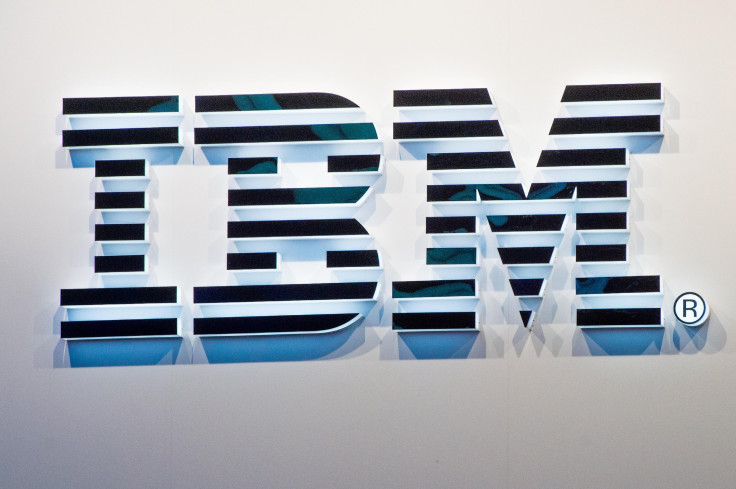IBM's Latest Move Could Hurt Intel And AMD

IBM (NYSE:IBM) co-founded OpenPOWER, which open-sourced reference designs and firmware for systems powered by its Power CPUs, back in 2013. That move expanded IBM's base of Power CPU customers, undermined Intel's (NASDAQ:INTC) dominance of the server market, and tethered more companies to its ecosystem.
IBM recently expanded that strategy by open-sourcing its Power CPU architecture alongside reference designs for its Open Coherent Accelerator Processor Interface and Open Memory Interface, which both maximize memory bandwidth between processors and attached devices.
Simply put, Big Blue is offering the world a blueprint for making their own CPUs. This could be great news for companies, especially Chinese ones, that want to reduce their dependence on proprietary technologies from other countries. But this could also be terrible news for Intel, AMD (NASDAQ:AMD), and other chipmakers.
Why is IBM doing this?
IBM previously manufactured and sold its Power CPUs to other companies in the automotive, medical equipment, military, aerospace, and gaming markets. Its CPUs notably powered Microsoft's Xbox 360, Sony's PlayStation 3, and the Nintendo Wii -- but it lost those markets to AMD and NVIDIA in the latest console generation.
IBM eventually realized that the unprofitable Power CPU business was a dead weight and that it couldn't challenge Intel's near-monopoly in the data center market. In 2015 it agreed to pay GlobalFoundries $1.5 billion over the following three years to take over its chip manufacturing business. That deal was passed on to Samsung's foundry earlier this year.
IBM still uses Power CPUs in its own servers and mainframes, but no longer generates meaningful revenue from third-party sales. Therefore Big Blue had nothing to lose by open-sourcing designs for its Power CPUs, which can be installed in a wide range of devices, to the world.
IBM's decision to open-source those designs could also curry the favor of China, which is desperately trying to reduce its dependence on Intel and AMD's CPUs with homegrown chips. Chinese companies previously gained access to AMD's Epyc server CPU designs via a complex joint venture, but the Trump Administration's trade blacklist severed that connection in late June.
IBM's open-source approach is immune to those blacklists, and will likely be embraced by companies like Huawei, which can now use the Power architecture to build new 5G infrastructure, network switches, and Internet of Things components. These companies could also tweak the designs to develop new PC and mobile processors.
Offering an open-source olive branch to China amid the escalating U.S.-China trade (and tech) war could also significantly improve Big Blue's reputation in the country. IBM's revenue in China fell 8% last year due to lower enterprise spending, but gaining more OpenPOWER allies in the country (which might buy more software and cloud services from IBM) could offset those declines.
Why is this bad news for Intel and AMD?
Intel and AMD's businesses are both built on the assumption that x86 chips would dominate computing platforms for the foreseeable future. However, many open-source workloads on servers no longer require x86 chips, and hyperscale cloud companies -- like Amazon, Microsoft, and Alphabet's Google -- are now designing their own in-house chips to cut costs and optimize their hardware for certain tasks.
IBM's decision to open-source its Power architecture will enable those companies (many of which are already part of its OpenPOWER alliance) to reduce their dependence on Intel and AMD at an even faster rate. That's bad news for Intel, which is already struggling with sluggish sales of its industry-standard Xeon server chips, as well as AMD, which relied on higher sales of Epyc chips to offset lower year-over-year sales of its GPUs last quarter.
Both chipmakers could also see their orders to China plummet if Chinese chipmakers develop a Power-based CPU that matches the Xeon or Epyc's processing power. Those scenarios sound bleak, but they probably won't happen anytime soon. So Intel and AMD investors shouldn't lose sleep over IBM's OpenPOWER move yet.
The key takeaways
IBM's OpenPOWER move is a smart strategy which could eventually crack Intel and AMD's duopoly in the CPU market. It won't generate any near-term revenue for the company, but it extends an olive branch to China, and it might expand its software and services ecosystem to more enterprise customers.
John Mackey, CEO of Whole Foods Market, an Amazon subsidiary, is a member of The Motley Fool's board of directors. Suzanne Frey, an executive at Alphabet, is a member of The Motley Fool's board of directors. Teresa Kersten, an employee of LinkedIn, a Microsoft subsidiary, is a member of The Motley Fool's board of directors. Leo Sun owns shares of Amazon. The Motley Fool owns shares of and recommends Alphabet (A shares), Alphabet (C shares), Amazon, Microsoft, and NVIDIA. The Motley Fool owns shares of Intel. The Motley Fool is short shares of IBM and has the following options: short September 2019 $50 calls on Intel, short January 2020 $200 puts on IBM, short September 2019 $145 calls on IBM, long January 2020 $200 calls on IBM, and long January 2021 $85 calls on Microsoft. The Motley Fool recommends Nintendo. The Motley Fool has a disclosure policy.
This article originally appeared in The Motley Fool.




















